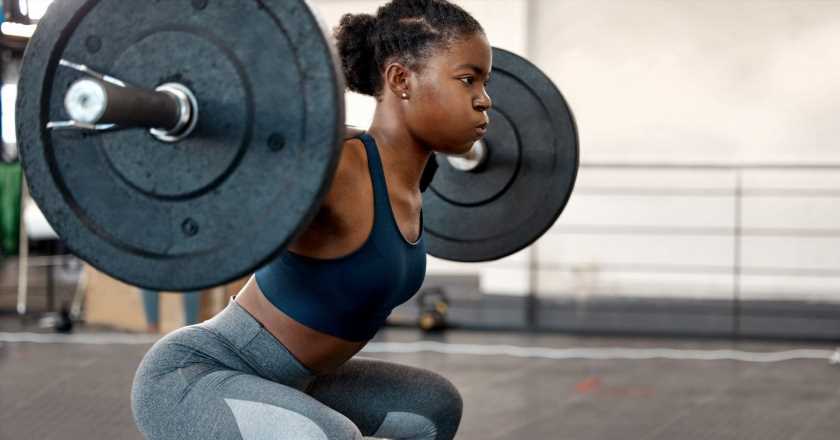High-intensity resistance training is the new HIIT – here’s how to do it
HIRT is the newest form of intense strength training – here’s how to do it to get strong and work your cardiovascular system.
For the past five years, HIIT has dominated the fitness scene, with its popularity peaking during lockdown as the easiest way to work up a sweat without leaving your house.
Most people have now gone back to the gym or studio classes – but they’re no longer interested in spending hours slowly picking up and putting down weights. The new workout on the block is focused on a more effective way to get strong. Enter: high-intensity resistance training.
What is HIRT?
The fundamental part of HIRT is the R – for resistance. That’s what separates this training style from HIIT.
“HIIT is about quick bursts of exercise, often using your bodyweight, but HIRT focuses on max effort through volume and weight, rather than speed,” says personal trainer Aroosha Nekonam from Ultimate Performance.
You’ll still be working through sharp, focused blocks of movement with a short recovery period, but HIRT isn’t about rushing. “With any form of exercise you need to have an understanding of body awareness, which is why moving fast with heavy weights isn’t recommended. That would make your form and technique drop,” says Nekonam.
You may also like
HIIT vs steady-state cardio: what’s best for physical and mental health?
What are the benefits of HIRT?
“HIIT is good, but cardio workouts will only get you so far to your fitness goals,” Nekonam explains. “Resistance training is always going to be key when it comes to maintaining and building muscle tissue, and incorporating it in these intense workouts will tax the cardiovascular system as well as your muscular endurance at the same time.”
It’s a two birds, one stone situation. “If you’re short on time and can’t spend an hour training, then doing HIRT will allow you to get a lot of volume into that one session without extending your workout time,” adds Nekonam.
She also notes that it’s a less strenuous alternative to HIIT – which is good for those who are hyper-stressed or have joint issues. “As there’s no jumping around or explosive movements, there’s less impact.
“I also find it’s great for people who often get a bit bored or distracted during their workouts, as the intensity of the training keeps you really focused and engaged.”

How to do HIRT
Choose compound moves
Start by picking four to six moves that you can comfortably perform in a circuit. “There’s no magical exercise to use in HIRT, but I think if you’re looking for more bang for your buck you want to be going for full-body compound movements. Things like squats and deadlifts that target your big muscle groups. That’s going to be a lot more intense than doing back-to-back isolation exercises that target little muscle groups,” says Nekonam.
If time-saving is the goal, you can even pick one piece of kit that serves all of the movements. Nekonam recommends a barbell circuit that you can deadlift, clean and squat without having to change the weights.
You may also like
Are you really deadlifting or are you doing a squat? How to fix your barbell deadlift technique
Pick the right weights and reps
“I like working in an eight to 15 rep range so you’ve got a good balance of intensity through the load that you’re lifting and the volume as well,” says Nekonam. Remember: form is key, particularly when lifting heavy weights. Don’t overload yourself, ensuring you can move through the reps at a steady tempo with good technique. And as you’ll be working through circuits, doing exercises back-to-back with no rest, try not to destroy yourself in the first set.
Recover
“Again, it’s not necessarily about doing it as quickly as possible but about doing it effectively. Perform those exercises well, then have a rest of up to a minute after each block of work, and repeat,” says Nekonam.
Recovery after high-intensity training of any sort is also important. “It’s tough going, so I would just be mindful of recovery. Pay attention to how you’re feeling and try not to surpass your optimal amount of training in the week,” adds Nekonam. That means taking appropriate rest days, sleeping well (especially after a tough session) and refuelling with lots of carbs and protein.
Try this HIRT workout:
8 x deadlifts
10 x cleans
12 x squats
15 x press-ups
45 seconds’ break
Repeat five times.
Images: Getty
Source: Read Full Article
